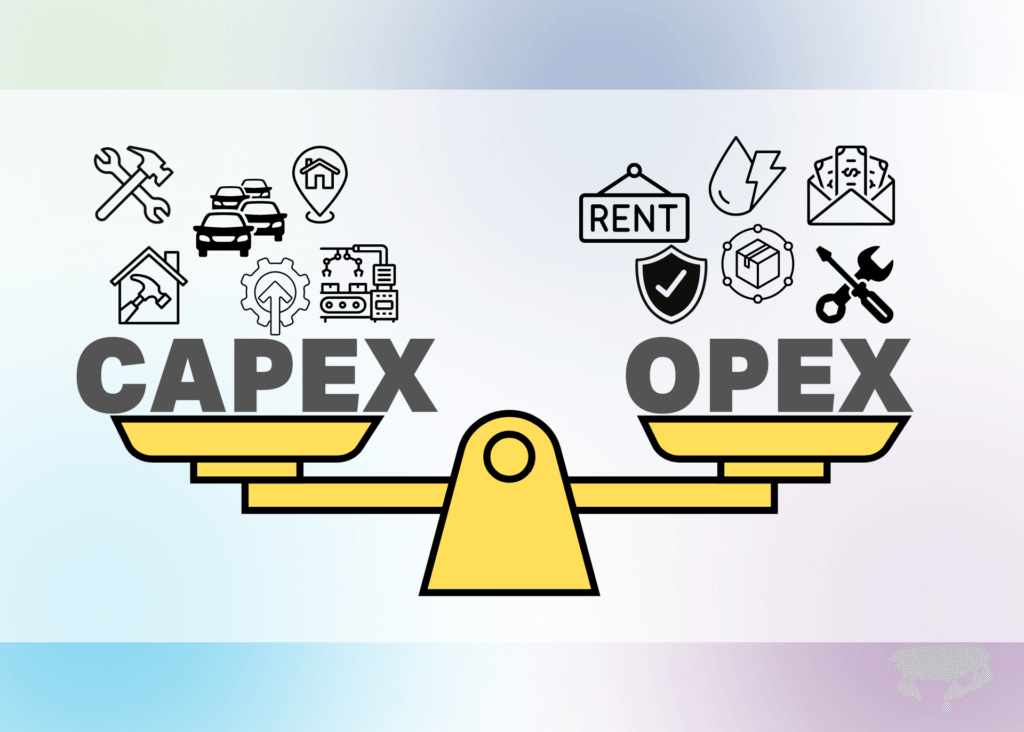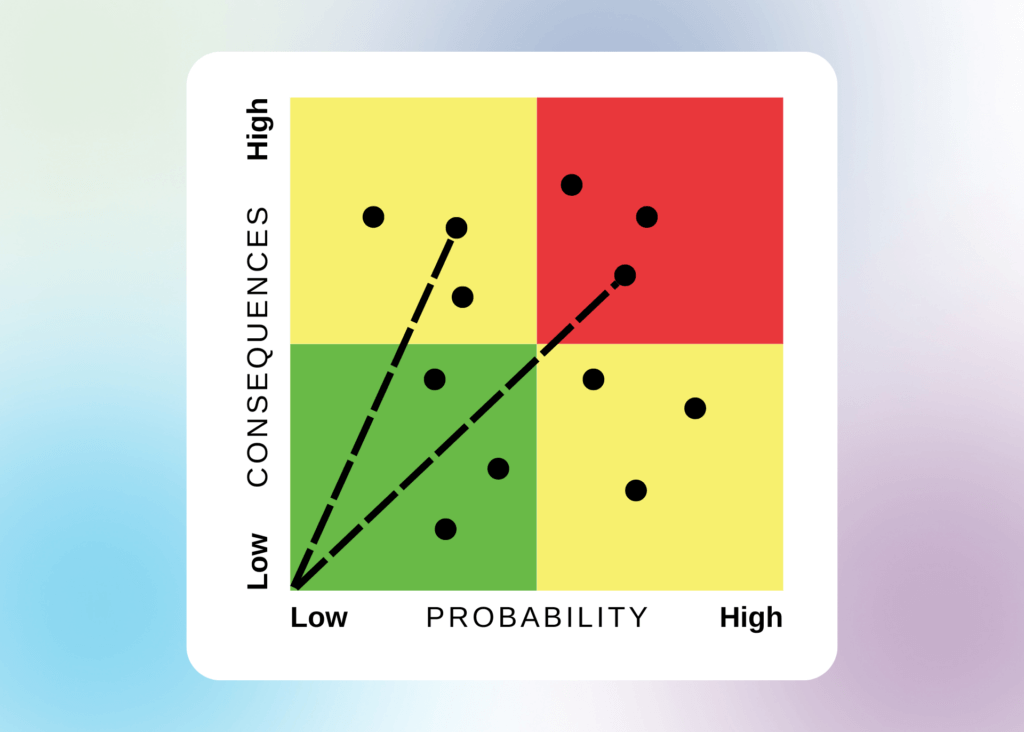Error-prone and disjointed spreadsheets are still pervasive in facility management. In a recent study, 43.9% of facility managers and building owners said they still use spreadsheets to track their assets. So it’s no surprise that another study found that nearly 40% of employees felt asset visibility was their company’s biggest challenge – with 25% saying it was the most significant risk to their organization.
Whether because of spreadsheets or inefficient software, asset visibility gaps leave an organization vulnerable to disruption of services, disappointed customers, and lost revenues.
Unified operating systems exist to eliminate these gaps and inefficiencies. With a single source of truth for complete portfolios, companies can get immediate insights that’ll change how they do business.
Here are five reasons why an operating system for your facility asset management is more effective than Excel/Spreadsheets or other inefficient platforms:
- Real-time centralized data
- Access anytime, anywhere via the cloud and on mobile devices
- Maintenance planning
- Audit and compliance readiness
- Spending and budget forecasts
1. Real-Time Centralized Data
A proper asset management software system creates a single source of truth that covers an organization’s assets, providing greater insight to make informed decisions about maintenance planning, asset lifecycle, and capital planning.
For instance, real-time centralized data provides facilities managers with tools to visualize their assets on a digital indoor map which they can share across departments and team members. Consequently, communication and collaboration improve tremendously.
For each physical asset, a registrar can record the following:
- Financial data
- Name-plate information
- Date of purchase
- Location
- Current status
- Access to scans of usage manuals, warranty information, and historical paper records
- Unique ID number
- Practical life and remaining useful life
Real-time centralized data also enables facilities managers to streamline data sharing between separate third-party systems. CMMS, IWMS, BIM, and CAN can all interoperate, enhancing data quality, accessibility, reliability, and accuracy.
Another benefit of real-time centralized data is making it easier for facilities managers to track asset performance. Everything from an item’s history to maintenance management requirements appears in one place . Facilities managers plan preventive maintenance schedules, prioritize work orders, and allocate resources efficiently using these solutions. They can also leverage asset data to support decision-making and drive maintenance and service delivery improvements. For instance, solutions enable managers to:
- Analyze asset utilization patterns – a measure of how efficiently you utilize your assets, tracking this metric can help improve efficiency and profit margins.
- Identify underperforming or over-used assets – some equipment may underperform if it is no longer useful in the current market, is poorly managed, or was overvalued when purchased. Likewise, overused assets can arise if they are no longer relevant or subject to excessive demand.
- Optimize space assignments – make the best possible use of resources by arranging items in a useful and efficient manner.
- Implement energy-saving measures – real-time data reveals assets consuming excess energy compared to their design specification, perhaps because they are faulty or failing. Organizations can use this information to assist maintenance planning or IoT integrations.
2. Access Your Data Anytime From the Cloud and on Mobile
Cloud-based asset and facilities management software lets businesses manage their physical assets through web browsers and mobile apps. Firms can access their data wherever they’d like, including in the field or at different sites.
Asset and facilities management software in the cloud offers various benefits to your businesses. For example, these systems give your company the flexibility of accessing your entire portfolio from anywhere, at any time. By eliminating spreadsheets that are susceptible to errors and slow to collect, you can utilize a single platform to provide real-time insights. Users can even use mobile devices to view, update, and add to an asset listing off-site – including rounds.
Cloud-based software also reduces costs dramatically. You don’t need to maintain IT infrastructure on-site. There are efficiency benefits, too. Asset management solutions automate repetitive tasks, such as scheduling, invoicing, and reporting, lowering operational costs.
Security is also superior. Cloud-based software offers high levels of protection for personal and sensitive business data. Modern solutions add encryption, authentication, backup, and recovery features.
If your enterprise grows, you can use cloud-based asset and facilities management software to manage the transition. Solutions let you add or remove features, storage, and users as needed without performing in-house scaling or purchasing new equipment. Cloud services integrate seamlessly with your existing software stack, enabling your firm to grow friction-free.
Lastly, being able to access data any time from the cloud or on mobile lets you leverage new technologies and capabilities remotely instead of having to develop them yourself in-house. For instance, cloud-based solutions can integrate:
- Machine learning for better predictive analytics
- Internet of things (IoT) for tracking physical assets’ location and condition
- Big data for understanding asset and facilities lifecycles and how they affect your firm’s bottom line.
Ultimately, cloud-based and mobile assets and facilities management software helps your business by reducing costs, improving scalability, and enhancing security. It can also help you transition to a more agile business by enabling staff to access vital systems from any location.
3. Maintenance Planning
A good maintenance plan can help reduce downtime, minimize repair and breakdown costs, and prolong the life expectancy of your assets. Therefore, it can substantially improve your bottom line.
Excel is a poor tool for asset and facilities management. Microsoft didn’t design its spreadsheet software for managing complex data entry and relationships, only simple calculations. Therefore, it is cumbersome and prone to human error when parsing large volumes of maintenance planning data.
Moreover, the tool doesn’t provide adequate reporting and visualization features for enterprises looking to monitor servicing schedules. The limitations in microsoft Excel for creating visuals and charts are significant and require substantial manual input.
Lastly, Excel does not support checklists or alerts for preventive maintenance scheduling and tracking. There are no built-in functions or templates for creating maintenance plans. You must manually enter data and update information, which is time-consuming and risks making errors. It is generic software, not a robust platform specifically built with asset management in mind.
Fortunately, asset and maintenance management software solves these issues. By having more visibility in asset utilization and how often an asset breaks down, you can make better decisions on proactive maintenance operations, improving asset lifecycle and saving time and money. In addition, an EAM can help prioritize maintenance using predictive analytics instead of a time-based approach, allowing you to focus proactively on what needs attention and increasing resource allocation efficiency.
The benefits of implementing a CMMS (computerized maintenance management system) software for maintenance planning are considerable:
- Improved asset lifespan and reliability due to fewer repairs and breakdowns
- Reduced waste and cost by optimizing resource allocation and inventory management
- Enhanced safety, ensuring buildings and equipment meet safety regulation requirements
- Higher productivity and greater worker satisfaction because of a comfortable, healthy, and attractive work environment
For instance, maintenance planning solutions through an EAM let you digitize your end-to-end workflows, keeping you up-to-date and prepared. Standardizing your operating procedure library across your organization ensures your employees follow the same servicing rules. If you want to return to a previous version, just recall it.
The right EAM also automates real-time maintenance compliance. You can use the software to standardize and streamline workflows, letting you schedule and track work or execute critical maintenance tasks digitally.
4. Be Audit and Compliance Ready
With the right asset-tracking solution, you can put requirements into your system from the start to ensure you’re currently meeting internal and external compliance requirements. This can save you time reporting and ensure your assets are running at peak efficiency.
Asset and facilities management software can help with audit and compliance readiness in the following ways:
- Storing and organizing information – store and organize all the relevant information about your assets and facilities, including their service contractions, location, and statutory requirements associated with operating them. You can then use this data to provide auditors with an overview of your firm’s operations and current status.
- Automate tasks – automate various compliance tasks, such as inspection notifications, repairs, and upgrades. Solutions make it easier to determine whether your facilities are working optimally and meet regulatory requirements for safety and quality.
- Generate reports – use customizable dashboards, or generate automatic reports on the status of your facilities and equipment. These help to identify problems with your systems or gaps in your workflow for you to address.
- Integrate with other systems – Finally, you can integrate asset and facilities management software with other methods, such as inventory, security, and procurement. This approach provides a holistic overview of assets across the organization, facilitating data-sharing between colleagues and other stakeholders.
Complying with local, state, and national rules and regulations can be challenging. Audits are a perennial threat. Fortunately, best-in-class EAM solutions provide a visible audit trail, ensuring data backups and showing edit/access history from a central hub. Operating a single, trusted record of truth avoids auditing nightmares, showing the time, data, and location of changes and updates.
5. Forecast Spending and Budgets
Lastly, asset and facilities management software helps with forecasting spending and budgets. This capability is critical for optimizing the performance and lifespan of assets and reducing costs and risks. For instance, solutions such as MCIM can:
- Help you prioritize your budgets to address issues before they become a crisis – A complete history of each asset and a total view of your portfolio, provides you with a detailed spending analysis that will help you make cost-effective purchasing decisions based on real-world conditions. Proactively keeping your company up with changing technology will save you money and headaches.
- Track location-specific trends – Businesses can keep track of their asset inventory across multiple locations and departments while identifying underutilized or obsolete assets that can be disposed of or replaced.
- Enhance inventory management – You can get a better overview of asset usage, condition, and ownership, and identify those for disposal and repurposing. You can also see how demand issues could affect your need for capital investment.
- Better asset lifecycle management – Plan and execute asset-related servicing and maintenance throughout their lifetime, starting with procurement and installation. Also monitor warranties, contracts, compliance issues, and equipment performance – and use these data to estimate costs.
- Preventative maintenance – Preventative maintenance features let businesses schedule regular inspections and repairs for their assets based on predefined criteria or triggers. Use this data to assign work orders and document results.
- Predictive maintenance – Predictive maintenance uses machine learning and data analysis to predict when equipment or machinery may fail based on various parameters, such as historical performance. Again, this data helps managers organize optimal maintenance schedules.
- Capital planning – Finally, capital planning helps firms estimate the future costs and benefits of adding new assets to their portfolio. Use these approaches to plan which asset investments offer the biggest bang for the buck or align with your strategic goals.
Using asset and facilities management software for forecasting and budgeting improves accuracy and efficiency. Consequently, you can expect asset availability, quality, reliability, and safety improvements – all leading to greater compliance and customer satisfaction as well.
Why you have to quit Excel
Clearly Excel spreadsheets are not the ideal tool for asset and facilities management because they leave organizations vulnerable to risks and lost revenues.
If your current facility management system doesn’t offer the features above, you need MCIM. MCIM eliminates many of the inefficiencies of Excel and other asset management solutions by providing real-time, centralized data, access to systems in the cloud and on mobile, and maintenance planning tools all in one single pane of glass.
Organizations implementing an asset management solution like MCIM can improve their insights and make more informed maintenance planning, asset lifecycle, and capital planning decisions. MCIM also delivers reduced costs, better scalability, and enhanced security, helping your business be more agile and ready to scale.
MCIM is the operating system you need to manage your business’s equipment and facilities more efficiently. Schedule a 15 minute conversation with a product expert and learn more about how MCIM will change your business.
(This post has been updated to include additional information.)



